How do Black-tailed godwits wintering in Ganges-Brahmaputra-Meghna migrate back to their breeding grounds?
And where are these breeding areas in the first place?
Want to be a discoverer?
Keep an eye at the East Asian Flyway to see the upcoming individual migrations for yourself!
Bangladesh, located in the South Asia, offering key non-breeding and staging sites for thousands of migratory waders, lies in an enviable position at the overlap between two flyways, i.e. the East Asian - Australasian flyway (EAAF) and the Central Asian Flyway (CAF).
Three of the mightiest rivers of the world (Ganges, Brahmaputra and Meghna) flow from the Himalayas and merge in Bangladesh. They reach the sea at the Bay of Bengal, creating the largest delta basin of the world, the Ganges-Brahmaputra-Meghna delta.
Thousands of shorebirds migrate from their northern breeding site to the Ganges-Brahmaputra-Meghna delta during their non-breeding period. Much remains undisclosed about long distance migratory shorebirds in this region. Do migratory shorebirds travel across the formidable Himalayas, or do they make a detour around the highest mountains in the world to reach this delta?
In a unique geographical position between the EAAF and CAF, Bangladesh provides an opportunity to study birds of both flyways and fill knowledge gap of migration strategies of shorebirds by tracking studies. With the cutting-edge technology such as GPS-GSM trackers, the migration phenomena in this region await study, discovery and disclosure, if only for the sake of their conservation in a human-dominated world.
Black-tailed Godwits are a common shorebird in Bangladesh. To understand their migration and their non-breeding site choice of both inland freshwater and coastal intertidal mudflats, Delip K. Das, a PhD student under supervision of Prof. Theunis Piersma is on a pioneering mission to track their migration to and from Bangladesh using cutting edge technology of GPS-GSM transmitters. This project is a collaboration between University of Groningen, The Netherlands, and Jagannath University, Bangladesh, and supported by the Bangabandhu Science and Technology Fellowship of Bangladesh Government. This year’s field work was supported by the French Embassy in Dhaka. Global Flyway Network fulfills its usual linkage and umbrella functions.
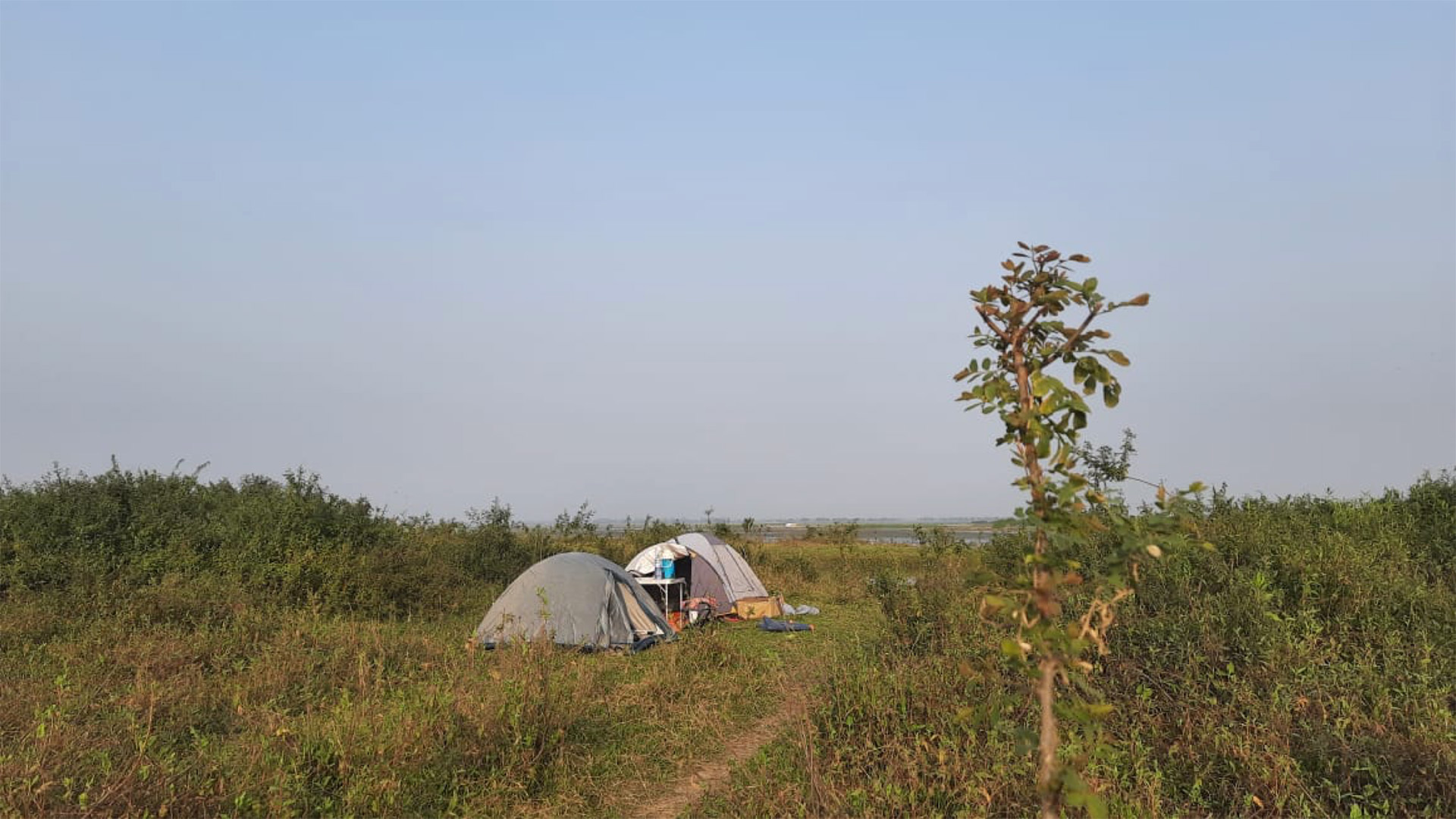
Field work kicked off in December 2021 and finished in March 2022. The 2021/22 field season was adventurous, challenging and eventually successful. We deployed 20 HQXS 4.5 grams GPS-GSM transmitters on 10 Black-tailed Godwits from Nijhum Dweep national park and 10 from Tangua Haor of Bangladesh.
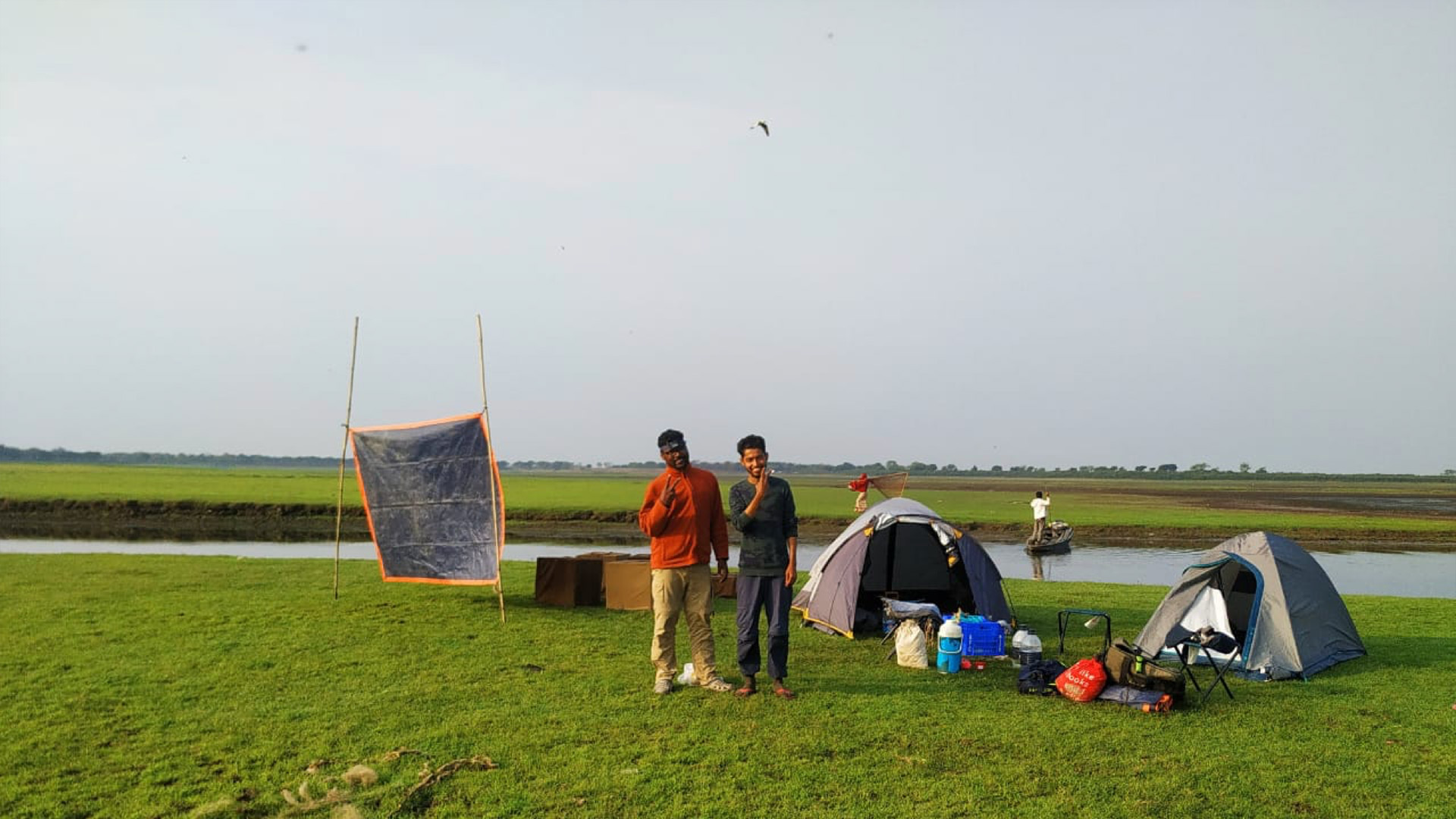
Nijhum Dweep is one of the most important shorebirds sites for the country, located in the central coast of Bangladesh. Tangua Haor, a Ramsar site, is located in the north of Bangladesh near the Indian border just down to the Meghalaya hills. For capturing Black-tailed Godwits, mist nets were used and three-color rings were put on the tibia using combination of red, blue, lime and yellow color. So, please look out for such combinations in your area and report the combination if you see such birds. In the process, the Das-team faced a cyclone, went to the sea at mid night in chest-high water during the rising tide to check mist nets for birds, and got stuck in mud. Members were rescued by other team-members.
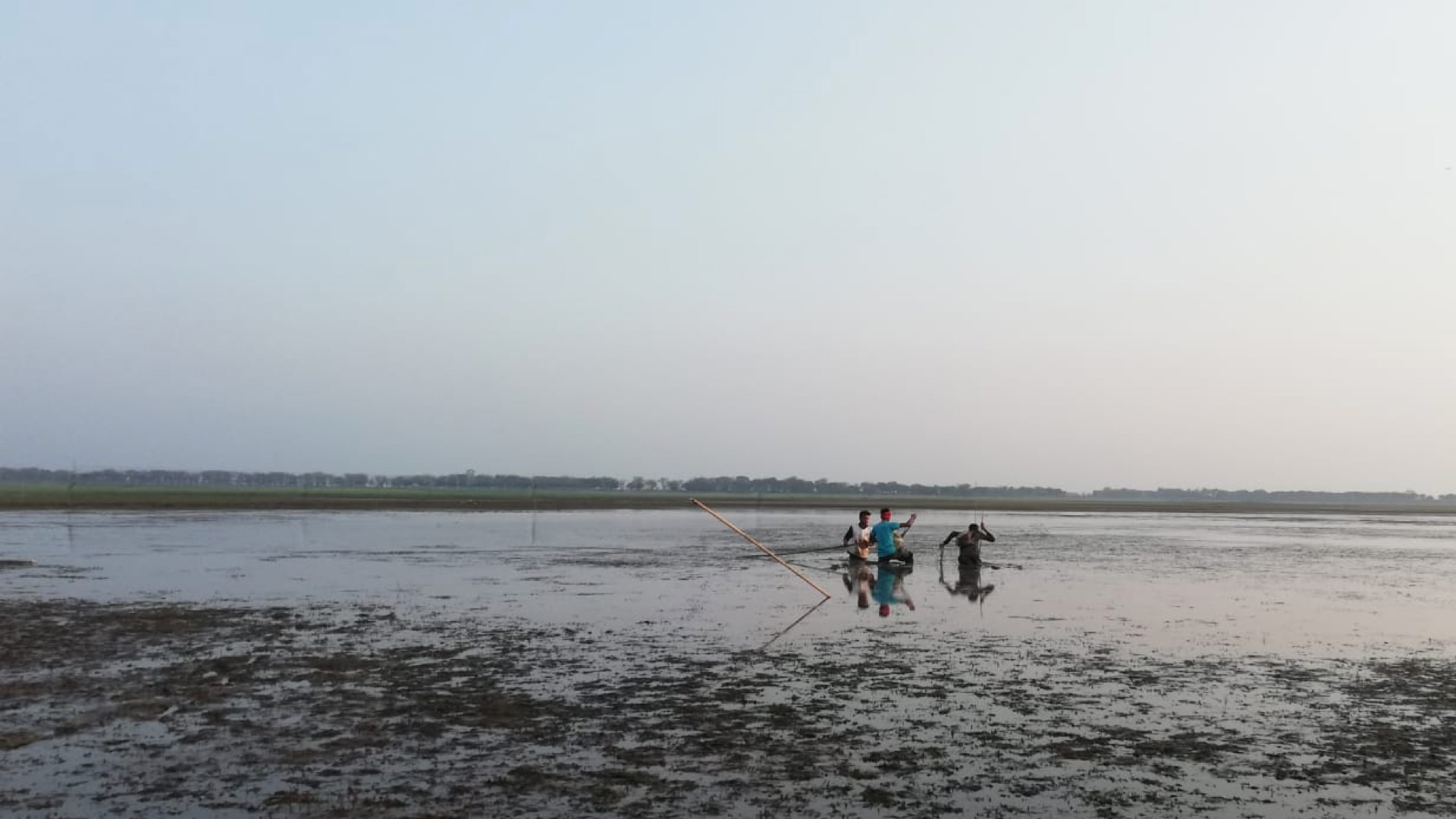
From the transmitters, we are getting signals and in late March 2022 all the tagged birds are still in Bangladesh. One Black-tailed Godwit named Theunis and tagged in Nijhum Dweep is more explorative than the other godwits. It covered a wide area of central coast of Bangladesh outside the Nijhum Dweep National Park and is now back to Nijhum Dweep again. Another one named Shariful was tagged in Tangua Haor but travelled towards the coast. These movement patterns have not been seen by anybody before!
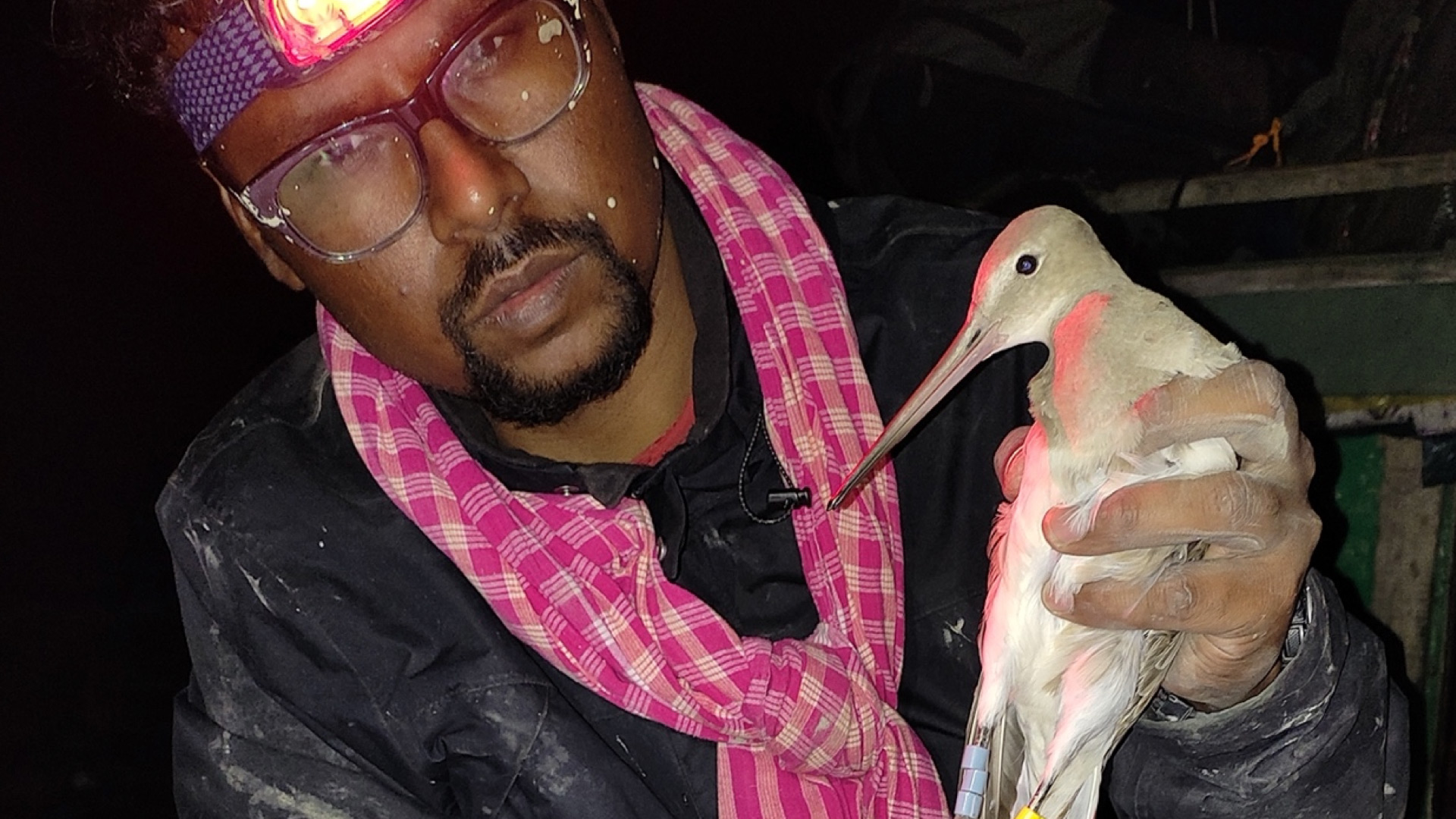
We are hoping Black-tailed godwits will start their return migration journey to their breeding site in a few weeks. Will they cross over the Himalayas or take detours? Our brand-new project for the country is going to discover new information and advance our understanding of the migration of (yet unknown subspecies of) Black-tailed Godwits from the largest delta of the world, the Ganges-Brahmaputra-Meghna.
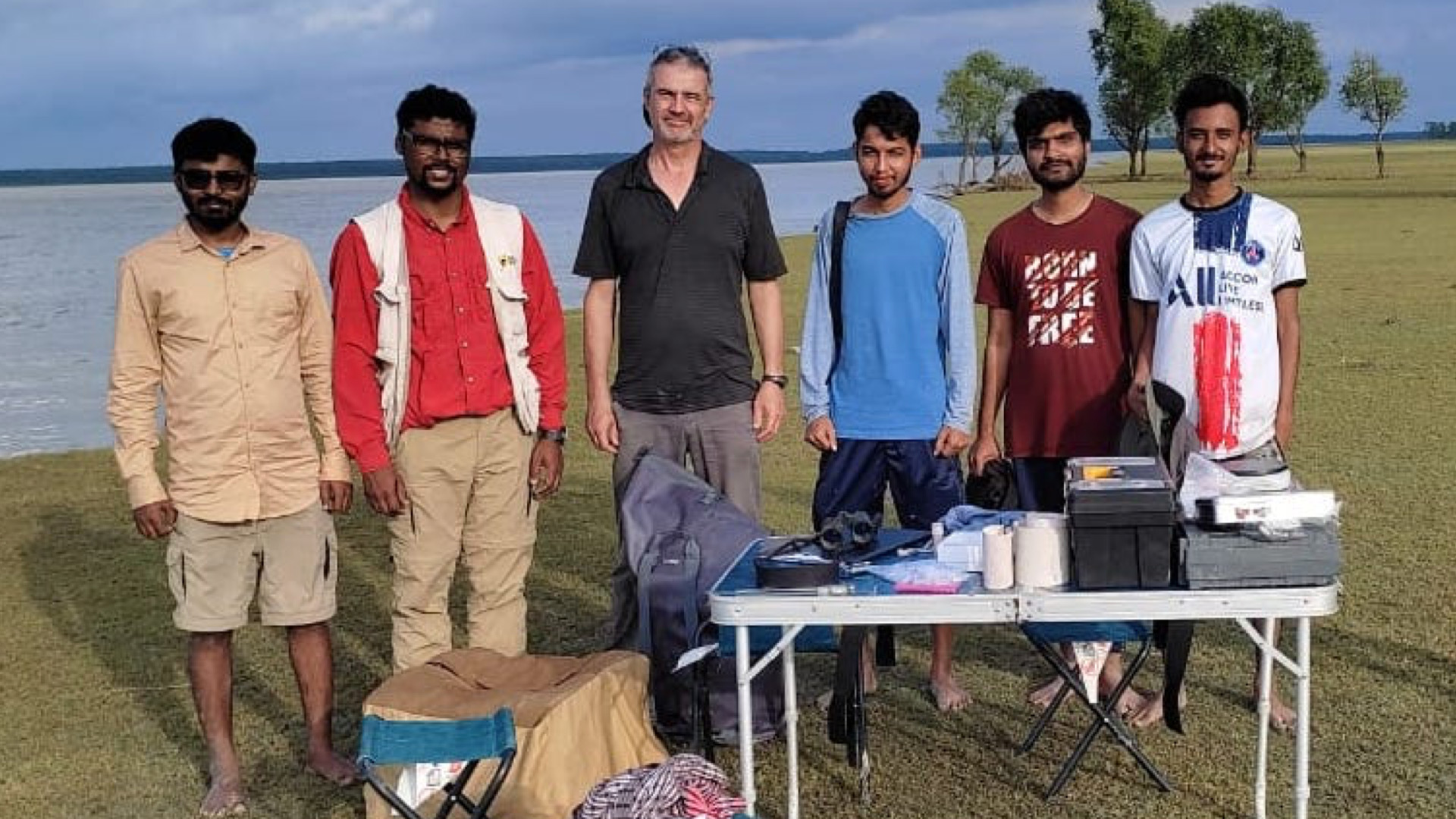
Contact: Delip K. Das